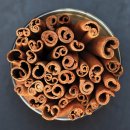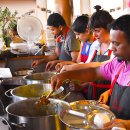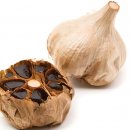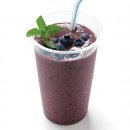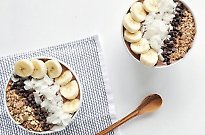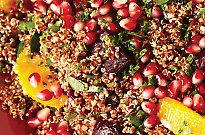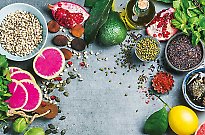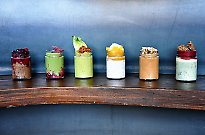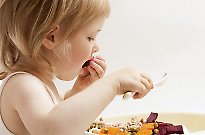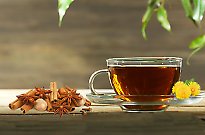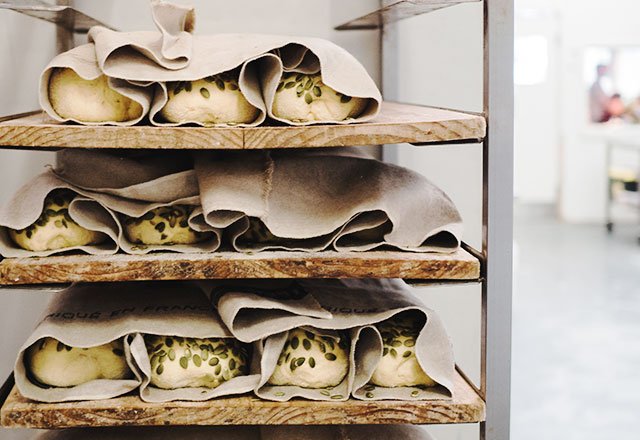
Why sourdough is taking Australia by storm
Why sourdough is taking Australia by storm

Most of us have a love-hate relationship with bread. That is: we hate that we love it so much. Though it has always been a staple of the Western diet, bread fell out of favour during the war-on-carbs years, where Atkins and the South Beach Diet reigned supreme. A 2014 study conducted by Baker’s Delight found that 43 per cent of women believed that bread would make them fat. And with the rise of gluten intolerance and gluten free fandom, you’d wonder why we hadn’t given it up altogether. But neither the low-carb or gluten-free diet booms seem to have quelled our love for bread glorious bread, because, according to recent Roy Morgan research, more than 70 per cent of Aussies are buying bread on a weekly basis.
But there is some change afoot in the bread world. Where once white, wholemeal and multigrain sandwich loaves (with the odd Turkish loaf, damper roll or ciabatta thrown in) were our bread staples, another loaf has risen (pun intended) to take the lead. And for all the right reasons. “Turkish and ciabatta [breads] often contain added yeast, oils, sugars and preservatives, whereas sourdough is all natural and much better for digestive purposes,” says founder of Rustica Sourdough bakery and cafés in Melbourne, Brenton Lang – who has been baking for 17 years. Unlike traditional bread, which is made with bakers yeast, sourdough is made with a ‘starter’ of naturally occurring, or ‘wild’, yeasts and lactobacilli bacteria – the same good bacteria that is used to create yoghurt and fermented vegetables. “The whole process is rather complex and can have many variations,” says Lang. “It’s a very demanding process that takes consistency to perpetuate the culture.”
But, as a result, sourdough bread is unlike any other bread on the planet. A study by the American Gastroenterological Association found that the fermentation of wheat flour with sourdough lactobacilli decreases the concentration of gluten, making these products less irritating to people with gluten intolerance and safer for those with coeliac disease. Another study, published in the Journal of Cereal Science, found that sourdough fermentation reduces the availability of simple carbohydrates by ‘predigesting’ them. This means that sourdough is less likely to cause spikes in blood sugar, and keeps you feeling fuller for longer. Long story short: sourdough is proof that bread can be a truly healthy food, even when it’s not gluten free or wholemeal (though you can find wholemeal sourdough, if you want the best of both worlds). Lang offered to help us get to know his favourite bread with some basic sourdough know-how.
How did you discover sourdough?
It was during a six-month holiday to Europe and the USA. I was inspired by the sourdough movement and returned to start Rustica in Melbourne in 2012. Rustica now has three locations, and more opening soon.
What do you love about bread?
Well firstly, bread can be eaten with almost anything – sweet or savoury. And good bread can easily be demolished by the loaf.
What do you think sets sourdough apart from other breads?
From our perspective, all our bread is hand crafted and uses only natural ingredients focusing on flour, water and salt. We use a minimum 36-hour fermentation process and there are no additives or preservatives and it’s baked fresh daily, which many of the supermarket breads don’t offer.
Can you explain how the sourdough process works?
A very generalised sourdough process usually starts with natural ingredients, generally flour and water to create a culture. We then elaborate the culture by ‘feeding’ it; many factors can affect this development process, type of flour, hydration, temperature, location and so on.
We then get the culture strong and active enough to use. At this point it is called a starter. A starter is good to use when it can triple in size in around an eight-hour period depending on the temperature. A portion of starter is then used to make the bread. A portion of starter is always kept to ‘refresh’ and perpetuate the culture.
Is sourdough sour? Can some kinds of sourdough be more sour than others?
Sourdough can definitely be more acidic from baker to baker depending on longer culture or dough fermentation times and resting temperatures, different culture hydration ratios and using different flours. Sourness comes from the presence of various acids (lactic and acetic mostly) that are produced by the bacteria present in the culture. These culture variations affect the sour flavour.
Bread has received a lot of bad press from the health-conscious over the years. Has this bad press ever changed how you thought about bread?
I’m mindful of how much I consume. I only eat bread from independent artisan bakeries that use quality ingredients and processes.
For more information on Rustica Sourdough Bakery and Rustica Canteens (where they serve up breakfast and lunch featuring their breads and pastries) visit their official website.

